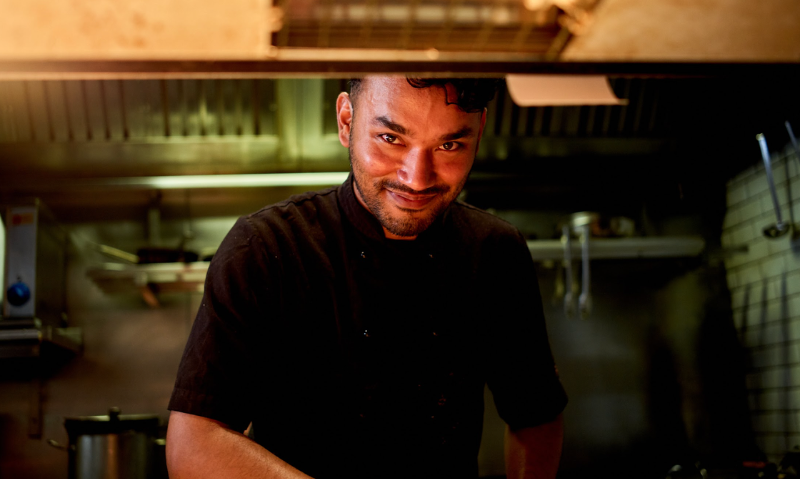
It’s no secret that rising rates, higher bills, and staffing woes are taking a big toll on the Australian hospitality industry, which, outside of Europe, is the biggest in the world per capita.
That’s why we’ve crafted this special series of articles based on our findings from MICE 2024 (Melbourne International Coffee Expo), where expert industry panelists gathered to speak about how cafe and venue owners can run better businesses.
In Part 1, we cover how to manage staffing costs, with insights from Dave Makin, the founder of Axil Coffee, who shares his wisdom on how he deals with staffing costs at Axil, a brand that’s loved by coffee enthusiasts and who roast and supply to some of the country’s best venues.
With upwards of 300 staff and award rates and superannuation rising, Axil has always found staffing costs to be a major challenge and the biggest expense line on their P&L - which is why it’s so crucial to manage it.
Here, he shares some tips for how your venue can manage staffing costs.
1. Avoid chaos: good systems mean lower labour costs
It’s important to have systems in place that lead to staff efficiency, knowing that systems make life much easier for staff - and for you.
“We have a takeaway service protocol which is a step by step guide of how to serve a customer. We also have a table service protocol, and so when staff come into work, there are guidelines to follow."

Bertoni, in Sydney’s Balmain
“The flipside is cafes where everything is a shambles, nothing’s ever the same… it’s stressful to work in that environment for the staff member, but it's also not very efficient.”
Working out efficiencies makes service faster and more streamlined, which also means that there will be less labour wasted - and less labour cost.
2. Have a real time understanding of your comings and goings
The team at Axil have spent a lot of time figuring out an efficiency calculator that gives them an accurate picture of their incomings and outgoings at any given moment in time.
“If our week finishes on a Sunday night, by lunchtime the next day, I’ll have a full P and L given to me by the team of every single food cost and labour cost for the previous seven days.”
Knowing your numbers is crucial to understanding any business, so you'll need to set up another system that allows the right information to rise to the top. It might take time, but it’s the key to understanding your business.

What hospitality looks like when it’s not about paperwork
3. Don’t let paperwork get the better of you
The problem with hospitality is the pace. Weeks or months can pass before anyone has even looked at the numbers, which, says Dave, is a recipe for disaster.
“There was a time when all we had was a box and were throwing everything in that box, running around like crazy people, just trying to serve customers as they walked in the door.
Working like this meant paperwork would pile up. "We knew we were making money because we would pay our bills - but we didn't really understand what our labour cost or food cost was. That’s why you need to work in week to week blocks to work out what's going wrong.”
4. Automate your data entry
Owning a hospitality business these days means wearing a lot of hats. “When I first started, I was trying to do a lot on my own…”But now there are so many ways you can get invoices automatically pushed into your accounting software. We use a program called Zone CAPTCHA. It takes our supplier invoices and automatically imports them into our accounting package.”
Axil also automates the numbers from their payroll, with the aim being to reduce manual data entry, which tends to be the number one detractor from keeping systems up to date.

Good staff are essential in a hospitality business
5. Work out your costs per hour
What all of these systems allow you to do is know how many dollars of revenue you need for every staffing hour you put in your roster.
For Axil, they worked out they’d be looking at “between $120 and $140 worth of revenue per hour of staffing.”
For every venue though, these costs will vary depending on the type of venue, and type of kitchen (ie. espresso bar versus full-service kitchen).
“Whatever type of venue or kitchen, we’re looking at our labour and food cost and dividing that back to make sure we’re hitting a particular efficiency number, and generally we’re looking at that cost to be about 65%.”
The reason for combining food and labour costs is because the cost of one negatively correlates with the other. “On our kitchen sites, our wages are higher, but our food cost is lower because we're making food in house. And, at the opposite end of the spectrum, when we're talking about an espresso bar, our food cost is higher because we're buying everything in, but our labour's lower because it's transactional.
“So we work on labor and food being 65%, with 10% rent, about 5% on utilities, and that leaves about a 20% bottom line.”

Categories
Advice
Food lover, restaurant-goer, hospitality appreciator, and writer of content at Ordermentum.







